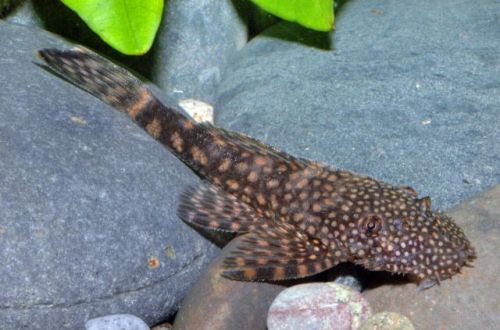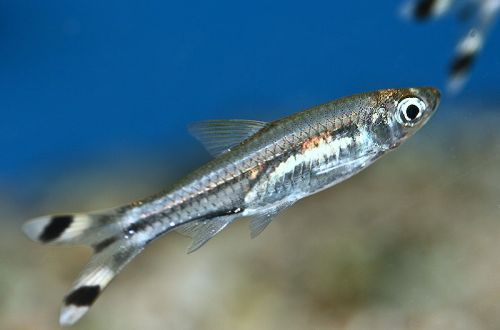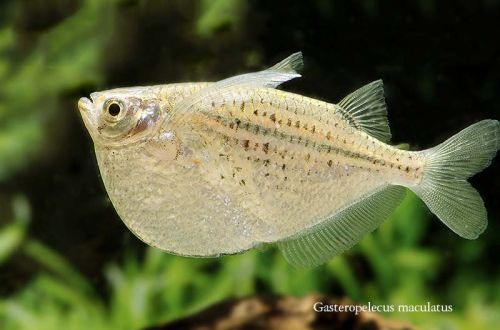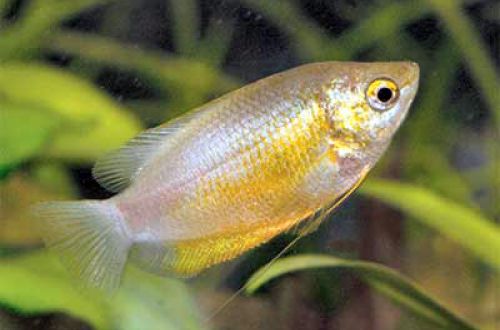
mustachioed catfish
Ancitrus dark or Mustachioed catfish (Ancistrus cirrhosus) has an exotic appearance, somewhat similar to a shaggy dog. The fish is able to sit motionless for hours, which, combined with camouflage, makes it almost invisible in its natural habitat. For some aquarists, the fish may seem scary with this “stubble” on the face, while for others it is quite a nice and desirable acquisition.

Contents
Habitat
Ancitrus catfish (Ancistrus cirrhosus) was first described by the explorer Achille Valenciennes in 1836. The fish have been found in tributaries of the Amazon River in South America, in particular in the Parana River basin.
Ancistrus is the largest genus within the kingdom Ancistrini and currently has 64 recognized species. The population of this species of catfish is widespread, so specimens caught in the wild can be sold. However, this is rarely seen on the European market.
The habitat ranges from fast-flowing rivers with gravel, stone bottoms to muddy, silty stagnant pools. During the rainy season, they can be found in flooded forests. Adults prefer deep-sea dark areas, while juveniles are found in shallow, shallow waters.
Description
Ancitrus dark is distinguished by the presence of a large number of processes on the head, similar to tentacles or large bristles, in males the processes are more fleshy than in females – such processes are a unique feature of the genus Ancistrus. These small fish (in the adult state, no more than 9 cm) have spikes, they pump the lateral fins, and a number of bone plates are evenly distributed over the body. Due to the peculiarities of nutrition, the mouth has changed and has become like a suction cup, which is convenient to scrape algae from the surface of objects.
The body color is usually uneven brown, black, olive or gray with white or yellow spots depending on the region of origin. There is a “skewbald” species that has large light patches all over the body. The belly is flat and much lighter than the rest of the fish’s body.
Food
This species belongs to herbivores. In addition to algae, it gladly absorbs almost any greens from gardens, such as spinach, carrots, lettuce, zucchini, cucumbers, even peas. It is recommended to purchase specialized vegetable sinking food intended exclusively for herbivorous fish. It is desirable to use vegetables as a supplement to the diet and not to replace the main food with them. They should make up no more than 15% of the total feed volume.
How to serve vegetables?
Vegetables, for example, cucumber or zucchini, must be thoroughly washed and cut into small pieces, the cucumber can be rings, it is not necessary to remove the peel. Fix the pieces at the bottom – press down with a heavy stone or secure with a stainless steel clip.
Despite the fact that the fish is herbivorous, it does not pose a threat to aquarium plants, provided that it does not starve.
The diet is once or twice a day, it is advisable to feed the food after the lights are turned off, since the ancitrus are nocturnal.
Maintenance and care
Ancirus catfish are hardy and do not need special conditions, they are able to tolerate significant fluctuations in water parameters. When cleaning the aquarium, cleaning the glass, you should be careful not to hurt the fish and not damage the fleshy outgrowths on the head. When the fish is worried, they rise, as if bristling, you should also beware of the spikes on the fins.
The fish spends most of its life at the bottom, it is predominantly nocturnal, so a sufficient number of shelters are needed where the fish will hide during the day. As shelters, you can use dense plants with a strong root system, large twisted roots or driftwood. Wooden objects are the best way to decorate an aquarium, as they not only provide shelter, but are excellent sites for the growth of algae, which catfish feed on.
For good health, the water must be enriched with oxygen and a moderate flow of water provided. Modern filters combined with aerators do a good job of this task. If you notice that periodically the fish rises to the surface to swallow air, then there is a lack of oxygen in the water and the presence of ammonia / nitrite, which is caused by a broken or clogged filter.
There are no lighting requirements, provided that the fish have somewhere to hide. Due to the nocturnal lifestyle, you can install aquarium night lights to watch your pets.
Water:
Once every two weeks, replace at least 25% of the water from the volume of the aquarium.
Social behavior
This type of catfish gets along well with each other and other fish, but males, especially during the courtship period, can arrange fights; such skirmishes do not occur in a large aquarium. The fish does not pose a threat to others, but can eat game and fry. Ancitrus catfish are one of the few species that can be kept with small predators or aggressive fish such as cichlids, thanks to their protection in the form of bone plates and spikes. An important condition is that predatory fish must be less than or equal to ancitrus.
Sexual differences
Most males of the genus Ancistrus have more tentacles, as well as horn-like protrusions on the head, while females have noticeably smaller tentacles and are not located all over the head.
Breeding / breeding
Dark ancitrus (Ancistrus cirrhosus) is relatively easy to breed, mainly in the winter months – this is the rainy season in the Amazon, when there is an influx of cool water. They can breed successfully in a normal aquarium if similar conditions are created, however, keep in mind that not all tankmates may like this.
The breeding instinct in Ancitrus catfish can be started by replacing part of the water with cool water. At the end of autumn (the beginning of the rainy season in the Amazon), at least 75% of the water should be replaced with cool water – about 18 ° C, pH level – 6.5-7.0, hardness level – soft.
Successful breeding requires an aquarium with a volume of at least 40 liters for one pair, if there are several males, then the tank should be larger so that there are no conflicts over the territory. The obligatory presence of caves or snags, from which the male builds a nest, clearing it and the surroundings of debris.
During courtship, the male fluffs his dorsal and caudal fins and tries to attract the female to his nest; if successful, the female can lay 20 to 200 sticky eggs. Caviar is attached in cracks in snags or roots, after which the female leaves the nest and no longer takes part in caring for eggs and fry. The male, on the contrary, does not leave the nest for the next 7–10 days until the fry appear, only occasionally for feeding. He will clean it of dirt, remove bad eggs, ventilate it with fins so that there is no lack of oxygen.
After the appearance of the fry, they attach with suction cups to the surface of snags or the side windows of the aquarium, up to 4 days they feed on the remnants of the yolk, and then they switch to algae, if any. You can feed the fry by dissolving a small amount of baby food from zucchini, broccoli or other vegetables in water. In the future, the fry can be given powdered dry plant food.
Diseases
Catfish has a high disease resistance. If the aquarium is in good condition, then there are no health problems. Due to the peculiarities of the structure and lifestyle, catfish are sensitive to the content of ammonia in the water, which provokes antennae disease, which makes orientation difficult and prevents them from eating normally. More information about diseases can be found in the section “Diseases of aquarium fish”.





